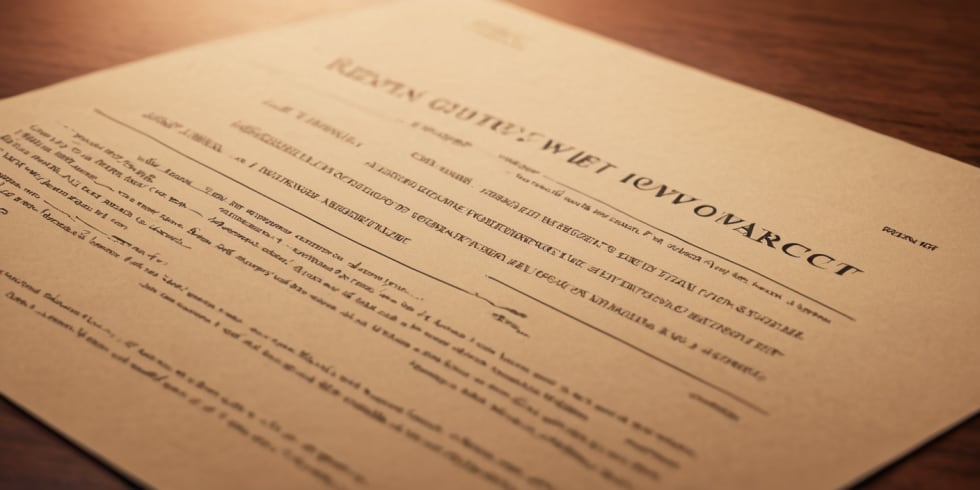The Ultimate Guide to Rent-to-Own Homes: Is It Right for You?
Introduction
Did you know that in the current year, rent-to-own agreements have surged in popularity, offering a glimmer of hope for countless potential homeowners? This significant uptick begs a crucial question: Is rent-to-own the right path to homeownership for you? Often hailed as a strategic solution, rent-to-own agreements serve as a bridge for those who aspire to own a home but are hindered by financial barriers.
Whether it’s the challenge of saving up for a down payment, improving your credit score, or both, embracing a rent-to-own option could be the guiding light needed to achieve your dream of homeownership.

What is a Rent-to-Own Agreement?
Rent-to-own agreements offer a pathway to homeownership by letting you rent with the option (or obligation) to buy later. Like a bridge between renting and owning, they come in two forms: Lease Option (choice to buy) and Lease Purchase (commitment to buy). Historically, these have helped people with limited credit or down payment funds achieve their dream. While the contracts can be complex, key terms like option fee, rent premium, and purchase price outline the steps from renter to owner. If you’re considering this route, view it as a map guiding you towards your future home.

How Do Rent-to-Own Agreements Work?
Understanding the rent-to-own process can feel like piecing together a puzzle. Let’s simplify it into a clear, step-by-step journey. Imagine you’re following a map to the treasure of homeownership. Here’s your guide:
-
Finding the Right Home: Begin your adventure by searching for a property available under a rent-to-own agreement. It’s akin to scouting for the perfect spot to dig for treasure.
-
Option Fee: Once your heart is set on a home, you’ll pay an option fee. This is your commitment to potentially purchase the home later. It’s usually a percentage of the home’s value and typically non-refundable, securing your exclusive right to buy.
-
The Agreement: Decide between a Lease Option, offering the flexibility to buy or not at the lease’s end, and a Lease Purchase, which commits you to buy. It’s important to distinguish your path early on.
-
Renting Phase: As you rent the property, a portion of your monthly payment is allocated as a credit towards the future down payment. Imagine each payment as a step closer to your treasure.
-
Maintenance and Repairs: In contrast to traditional renting, you may be responsible for upkeep. This prepares you for the responsibilities of homeownership.
-
The Purchase Phase: When the lease concludes, it’s decision time. If you’ve opted for a Lease Option and choose to buy, your accumulated rent credits are applied to the down payment. Under a Lease Purchase, the agreement culminates in the purchase.
-
Financing: Should you need further funds beyond the rent credits, securing a mortgage is your next step. This is when your creditworthiness comes into play.
-
Closing the Deal: The final step is the closing, where you transition from renter to homeowner. Congratulations, you’ve reached the end of your map and discovered the treasure of homeownership.
By breaking down the rent-to-own process into these steps, you’re better prepared to navigate this unique path to owning a home. Each phase is a crucial part of the journey, leading you closer to the dream of homeownership.

Who Should Consider a Rent-to-Own Agreement?
Rent-to-own agreements aren’t for everyone, but they shine for specific groups. Individuals struggling with large down payments can use it to save and secure today’s prices. Young couples can build credit while living in their future home. Even newcomers can test out a neighborhood before committing. Ultimately, it’s a gateway to homeownership for those facing financial or situational hurdles, offering a chance to build equity and pave the path to their dream home.

Benefits of Rent-to-Own
Embarking on a rent-to-own journey can feel like setting sail on uncharted waters, yet it’s these waters that can lead you to the lighthouse of homeownership. Let’s dive into the treasure trove of benefits that rent-to-own agreements offer, shall we?
1. Locking in the Purchase Price: In a market where house prices can skyrocket like a rocket, rent-to-own agreements allow you to lock in the purchase price at the beginning of your lease. This means if the housing market decides to take a walk on the wild side, you’ll be watching from the safety of your locked-in price, potentially saving you a pirate’s ransom in the future.
2. Building Equity Before Buying: Imagine paying rent that acts like a secret savings account for your future home. A portion of your monthly rent in a rent-to-own setup goes towards a down payment, slowly but surely building your stake in the property. It’s like planting a garden where every rent payment is a seed that grows equity over time.
3. Boosting Your Credit Score: For those of us whose credit scores have seen better days, rent-to-own offers a golden opportunity to improve it. By making consistent rent payments, you’re proving to the financial world that you’re as reliable as a Swiss watch. A better credit score can lead to more favorable mortgage terms when it’s time to buy, saving you money in the long run.
4. Getting to Know Your Home and Neighborhood: It’s like dating your house before putting a ring on it. Living in the home before you buy gives you the unique chance to discover all its quirks and charms. Not only do you get to test out the neighborhood, but you also avoid the heartache of buyer’s remorse.
5. Avoiding the Hassle and Costs of Moving Twice: If moving were an Olympic sport, none of us would want to compete. Rent-to-own saves you from the double trouble of moving twice — first to a rental and then to your own home. It’s a one-and-done deal that keeps you settled and stress-free.
6. Time to Save Up: For many, the brick wall on the way to homeownership is the hefty down payment. Rent-to-own agreements give you the runway to save up for this, all while living in the home of your future. It’s like being on a financial treadmill, working towards your goal of homeownership with every step.
In the grand scheme of things, rent-to-own can be a beacon of hope for those looking to navigate the often turbulent waters of buying a home. By offering a unique blend of flexibility, financial planning, and the comfort of being settled, rent-to-own agreements shine as a viable path to achieving your homeownership dreams.

Drawbacks of Rent-to-Own
Ahoy, future homeowners! As we navigate the rent-to-own seas, it’s crucial to keep an eye on potential storms ahead. While the horizon may look sunny, understanding the drawbacks of rent-to-own agreements can help you steer clear of choppy waters. Let’s dive into the not-so-glamorous side of these agreements with some real-life scenarios and a balanced view of the risks involved.
1. Higher Monthly Payments: Imagine our friend, Charlie, who signed up for a rent-to-own deal, only to discover that his monthly payments were higher than the average rent in his neighborhood. This extra cost is because part of each payment is earmarked for the future down payment. While it’s like forcing yourself to save, it can also strain your budget, leaving less room for other expenses or savings.
2. Non-Refundable Option Fees: Picture Lucy, excited to embark on her rent-to-own journey, paying an upfront option fee only to realize later that this dream home wasn’t her cup of tea. Unfortunately, option fees are typically non-refundable, meaning Lucy’s hard-earned cash doesn’t come back to her if she decides not to buy or can’t secure financing at the end of the lease.
3. Potential Loss of Investment: Meet Sam and Riley, who were all in on their rent-to-own home. However, when the time came to purchase, they couldn’t secure a mortgage due to unforeseen financial challenges. The rent premiums and option fee they paid, which were supposed to go towards the down payment, evaporated into thin air, leaving them with no stake in the property.
4. Maintenance Responsibilities: Envision Dana, who moved into a rent-to-own home, only to be greeted by a leaking roof and a broken HVAC system. Unlike traditional renting, where the landlord is responsible for repairs, rent-to-own agreements often place this burden on the renter. This can lead to unexpected expenses and headaches, especially if you’re not handy with a toolbox.
5. Locked-In Purchase Price Can Backfire: Alex and Jordan were thrilled to lock in a purchase price for their home, thinking they were outsmarting future market spikes. However, the market took a downturn, and their locked-in price ended up being higher than the home’s current value. They were faced with overpaying or walking away, losing their investment in the process.
6. Seller’s Financial Troubles: Lastly, consider the case of Taylor, who was months away from buying their rent-to-own home when they learned the seller was facing foreclosure. Taylor’s dreams and investments were at risk due to circumstances entirely out of their control, highlighting the importance of vetting the seller’s financial stability.
By understanding these drawbacks, you’re better equipped to ask the right questions, weigh your options, and possibly find the treasure chest of homeownership at the end of your journey. Remember, every ship needs a good captain. Make sure you’re steering yours with as much information as possible to avoid the sirens’ call of potential pitfalls.

Navigating Rent-to-Own Agreements
Ah, rent-to-own agreements! They’re like navigating through a dense fog at sea, where every turn could lead to a treasure island or a rocky shore. To ensure you’re charting a course towards homeownership success rather than disaster, here are some actionable tips and a compass to guide you through the murky waters of rent-to-own agreements.
1. Dive Deep into the Details: Like a seasoned sailor studying their maps, you must scrutinize the rent-to-own agreement. Understand every clause, from the rent premiums to the option fee, and how much of your rent goes towards the down payment. Knowledge is your best defense against unexpected surprises.
2. Plot Your Course with Professional Guidance: Navigating these waters alone can be daunting. Hiring a real estate lawyer or a financial advisor is like having a first mate with a keen eye on the horizon. These professionals can help decode the legal jargon, ensuring the agreement aligns with your financial health and homeownership goals.
3. Keep a Weather Eye on the Option Fee: Remember, the option fee is usually non-refundable. It’s the price of securing the right to purchase the home later. Make sure you’re comfortable with this amount before you sign, as it’s a significant part of your voyage towards homeownership.
4. Maintenance and Repairs - Who’s Manning the Ship?: In traditional rentals, the landlord handles repairs. In rent-to-own, you might be at the helm. Clarify who’s responsible for what, so you’re not caught off guard by a sudden storm of repair costs.
5. The Purchase Price - Locking in Your Coordinates: Ensure the purchase price is clearly stated in the agreement. This is your treasure map’s “X marks the spot.” Whether the market climbs or falls, you need to know where you stand.
6. Have an Escape Route: Even the best-laid plans can encounter rough seas. Understand the conditions under which you can walk away from the agreement, and what would happen to the money you’ve invested towards the down payment.
7. Secure Your Financing Early: Don’t wait until the lease ends to figure out how you’ll finance the home purchase. Start early, assessing your mortgage options and ensuring your credit is shipshape. This preparation can make the transition from renter to homeowner as smooth as sailing on calm waters.
8. Final Inspection - Don’t Skip the Dry Dock: Before signing, have the home inspected just as you would before buying any property. This ensures you’re not investing in a sinking ship and helps negotiate any necessary repairs.
By following this compass, you’re not just drifting in the rent-to-own seas; you’re steering with purpose towards your dream of homeownership.

4 Alternatives to Rent-to-Own
Embarking on the homeownership journey can be as thrilling as discovering uncharted territories, but it’s essential to know all the paths that lay before you. Rent-to-own is a fantastic voyage for many, yet it’s not the only ship in the sea. Let’s explore some alternatives, highlighting their benefits and drawbacks, to ensure you’re setting sail in the direction that’s best for you.
1. Traditional Mortgages
Benefits:
- Immediate homeownership.
- Potential to build equity faster.
- Wide range of mortgage products to fit different financial situations.
Drawbacks:
- Requires a substantial down payment (typically 5-20% of the home’s price).
- Strong credit score needed to secure favorable interest rates.
- Longer commitment without the trial period a rent-to-own agreement offers.
2. First-Time Homebuyer Programs
Benefits:
- Assistance with down payments and closing costs.
- Favorable interest rates and loan terms.
- Educational resources to guide you through the buying process.
Drawbacks:
- Income and purchase price limits.
- Mandatory homebuyer education courses.
- Property must be your primary residence.
3. Federally Insured Loans (FHA, VA, USDA)
Benefits:
- Lower down payment requirements (as low as 3.5% for FHA loans).
- Flexible credit requirements.
- Special conditions for veterans (VA loans) and rural homebuyers (USDA loans).
Drawbacks:
- Mandatory mortgage insurance for loans with low down payments.
- Specific eligibility requirements.
- Limited to certain types of properties.
4. Saving to Buy Outright
Benefits:
- No interest payments, saving you money in the long run.
- Full ownership from day one.
- No debt obligations or credit requirements.
Drawbacks:
- Requires significant upfront capital.
- May take a long time to save the necessary funds.
- Potential missed opportunity costs from not investing elsewhere.
Comparison Table
| Pathway | Down Payment | Credit Requirements | Ownership Timeline | Special Conditions |
|---|---|---|---|---|
| Traditional Mortgages | 5-20% | High | Immediate | None |
| First-Time Homebuyer Programs | Low/Varies | Moderate | Immediate | Income/Price Limits |
| Federally Insured Loans | As low as 3.5% | Flexible | Immediate | FHA, VA, USDA specific |
| Saving to Buy Outright | 100% | None | Immediate upon purchase | Significant upfront capital |
As you chart your course to homeownership, consider these alternatives alongside rent-to-own. Each path has its unique compass points, and the best direction depends on your financial landscape, timeline, and personal preferences. Remember, the journey to your dream home is not a race; it’s an expedition worth preparing for, ensuring the destination is everything you’ve ever wanted.

FAQs
FAQs
Q: What exactly is a rent-to-own home agreement?
A: A rent-to-own home agreement is a deal where you agree to rent a property for a specific period, with the option or obligation to buy it before the lease expires. It combines elements of renting and buying, offering a unique path to homeownership for those who aren’t quite ready to make a full purchase upfront.
Q: Who benefits most from rent-to-own agreements?
A: Rent-to-own agreements are particularly beneficial for individuals or families who need more time to save for a down payment, improve their credit scores, or want to test out a neighborhood before committing to buying a home. It’s a flexible option for those on the cusp of homeownership but need a bit more time to get their finances in order.
Q: How much of my rent goes towards the purchase of the home?
A: The portion of your rent that goes towards the purchase of the home, often referred to as a rent credit, varies by agreement. Typically, a predetermined portion of your monthly rent payment is set aside as credit towards the down payment on the home. It’s essential to clearly understand this aspect of your contract.
Q: Can I back out of a rent-to-own agreement?
A: Whether you can back out of a rent-to-own agreement depends on the type of contract you have. A lease-option agreement usually gives you the right, but not the obligation, to buy the home, allowing you to back out without purchasing. However, a lease-purchase agreement might require you to buy the property at the end of the lease, making it harder to back out without legal or financial repercussions.
Q: What happens if the home’s value decreases or increases during the rental period?
A: If you’ve locked in the purchase price at the start of your rent-to-own agreement (which is common), you’ll pay that price regardless of market fluctuations. This can be a double-edged sword: you might end up with a bargain if the home’s value increases, but you could also find yourself overpaying if the market value decreases.
Q: Are there any additional costs I should be aware of in a rent-to-own agreement?
A: Yes, in addition to your monthly rent and option fee, you may also be responsible for maintenance, repairs, and possibly higher rent payments (since part of these payments may go towards your future down payment). It’s crucial to review the agreement carefully to understand all potential costs.
Q: What steps should I take before entering a rent-to-own agreement?
A: Before entering a rent-to-own agreement, it’s wise to:
- Review your financial situation and future goals to ensure this path aligns with your homeownership plans.
- Have the home inspected to avoid investing in a property with significant issues.
- Consult with a real estate attorney or financial advisor to understand the agreement fully and ensure it’s in your best interest.
- Consider your financing options for purchasing the home at the end of the lease term.
Q: How does a rent-to-own agreement impact my credit score?
A: While the rent-to-own process itself doesn’t directly impact your credit score, making consistent, on-time rent payments can positively affect your credit history. Additionally, using the rent-to-own period to improve your credit score can help you secure better mortgage terms when it’s time to buy.



